The complete guide to starting and setting up a bullet journal
Last Updated on October 26, 2024

Sometime ago I heard about bullet journals, and how effective they are in helping people plan and organise their lives. I was curious, so I started to research them, and came across a system that used dot points and icons to help their users plan their days.
I was confused, it all seemed too hard, so I didn’t bother looking into bullet journaling much further.
However, my interest in bullet journals was always in the back of my mind, and as I was on the hunt for a way to better organise my time, I decided to actually look into the system properly, and decided to give it a go.
I’m so glad that I started a bullet journal, as it’s the best thing I’ve ever done to make plans, set goals, compile lists, write notes on my day, and keep track of anything that enters my mind.
If you’re interested in starting a bullet journal, this post explains what a bullet journal is, as well as detailing the steps you can take to start your own bullet journal, and how I make planning a part of my daily ritual.
FIRSTLY, WHAT IS A BULLET JOURNAL?
A bullet journal is a customisable planning system that can be used as an appointment keeper, a space to brainstorm, make future plans, set goals, make lists, or plan your days – it can be anything you want it to be.
If you’re looking for something to keep you super organised, and allows you to plan or write down any random thought you have, then a bullet journal is perfect for you.
WHAT DO YOU NEED TO START A BULLET JOURNAL?
All you need to start a bullet journal is a notebook and pen.
This may be the perfect opportunity to use up a notebook that you currently have, or treat yourself to a new one.
If you would like a new notebook, there are so many options and sizes available. Don’t worry about starting with the perfect notebook, as you can experiment with different types until you find one that works the best for your planning needs.
The notebook that I use is a Leuchtturm1917 A5 notebook in Navy with dotted pages. I chose it based solely on the fact that it came up a lot when I was researching what a bullet journal was. However, other brands that are popular include Moleskin, Scribbles that Matter, and the Bullet Journal Notebook. Or just head to your local stationery supplier and buy a notebook that appeals to you.
You don’t need to spend a lot of money on a notebook, in fact in my experience, the best notebooks I’ve purchased have been super plain, and in the size I love, which is A5.
As for pens, any pen that you feel comfortable writing in will do. I prefer pens with black ink, and that aren’t too inky, as I’m a lefty and I smudge as I write.
HOW TO START A BULLET JOURNAL
The first place to visit to learn more about the bullet journal system is the official bullet journal site, where there are many articles to help you understand the entire system.
Please don’t get put off by some of the confusing icons and technical language that makes up the bullet journal like I did. This post will simplify everything, I promise.
Just one last note before I simplify the system, is that if you research the bullet journal system beyond the official bullet journal site, you will see some brilliantly decorated bullet journals by some extremely talented people. You don’t have to decorate yours if you don’t want to, the bullet journal was designed to be extremely minimalist. I keep mine super plain, which is why I use some more colourful examples in all of my bullet journal posts.
STEP ONE CREATE A KEY
A key lets you record what icons you use throughout your bullet journal, so you can consistently mark items off your to do lists in the same way every time.
Here’s an example of what a key looks like:
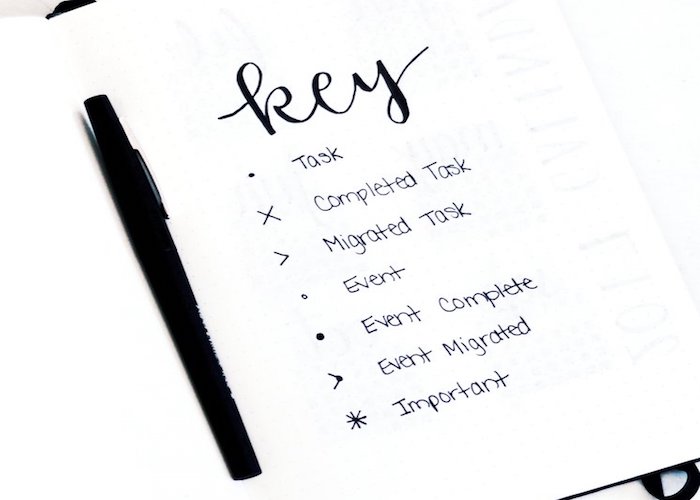
This key uses a dot point to mark a task, and a cross to detail that the task has been completed. A greater than sign shows that a task or event has been migrated (which means moved to another day). Events are shown by a circle, which is then coloured in once the event is complete. Lastly a star marks an important task, perhaps something that is a priority.
You may choose to use the same icons as this image, or you can create your own. Just use whatever icon means something to you.
STEP TWO CREATE AN INDEX
The index is like a table of contents, it allows you to organise everything that you put into your bullet journal.
Leave the first few pages after your key blank for your index. When you’re ready to set your index up, title each blank page Index, then add the topics of each page to your index along with their page numbers.
Your index allows you to find anything in your bullet journal that you may be searching for at any point in time.
Here’s an example of what an index looks like:
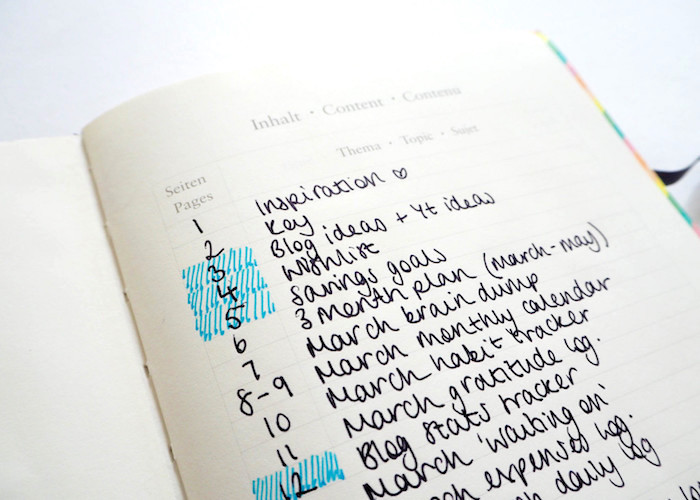
Here the user has highlighted pages in blue, which I think indicate a collection. More on collections further down.
STEP THREE CREATE A FUTURE LOG
The main purpose of a future log is to keep track of appointments and events that happen in the future. For example birthdays, doctor appointments, or deadlines.
These appointments and events will then be written into their corresponding monthly log, weekly log, or daily log, once the date arrives.
Here’s an example of what a future log looks like:

Not everyone feels the need to include a future log in their bullet journal, but if you’d like to, I’ve written 5 future log ideas for your bullet journal detailing what a future log is, five ways you can set one up, and how to choose a future log to suit your planning needs.
STEP FOUR CREATE A MONTHLY LOG
The main purpose of a monthly log is to list appointments, events, and tasks that are happening over the course of a month.
At the start of every month you set up your monthly log by listing all of the appointments, events, tasks, and anything else you have going on during that month, next to the date they’re due.
Here’s an example of what a monthly log looks like:
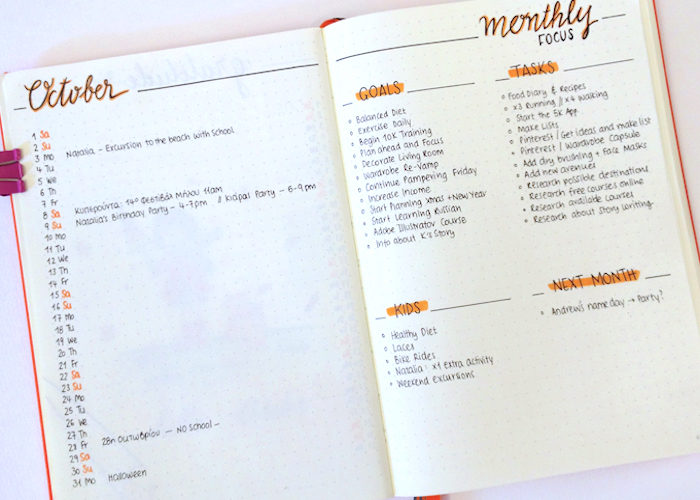
If you’d like to learn more about monthly logs, I’ve written 5 monthly log ideas for your bullet journal detailing what a monthly log is, five ways you can set one up, and how to choose a monthly log to suit your planning needs.
STEP FIVE CREATE A WEEKLY OR DAILY LOG
Weekly and daily logs are where you write your daily to do lists. You may choose to include either one, or both in your bullet journal, the choice will depend upon your planning needs.
A weekly log is not part of the original bullet journal setup, but it’s a log that many bullet journalers, (myself included), have grown to love and use in their own bullet journals.
For me a weekly log is the best way to plan my week. I list every appointment, event, or task that I need to achieve on a particular day of the week, which I get from my future log, monthly log, Google Calendar, and whatever I remember when I sit down on a Sunday night to plan the week ahead.
Here’s an example of what a weekly log looks like:
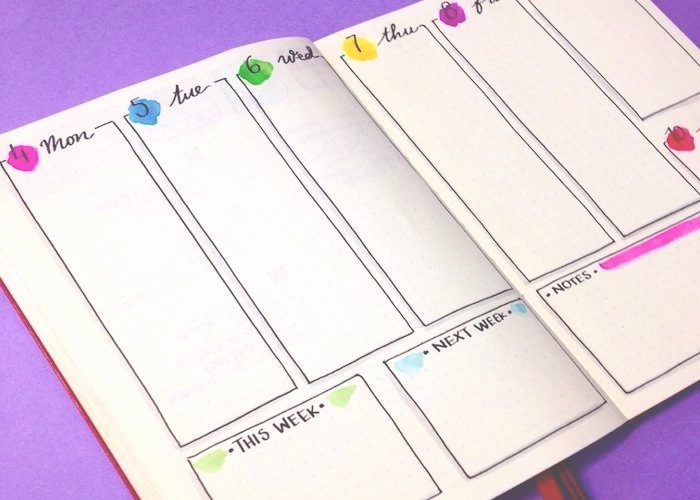
I use a weekly log and not a daily log because I can easily move something from one day to another if I don’t accomplish it, and I can view my week at a glance.
However, a daily log may appeal to you if you like to include a lot of detail on what you need to accomplish in a day, or if you like the idea of having unlimited space to write down your daily to dos.
Here’s an example of what a daily log looks like:
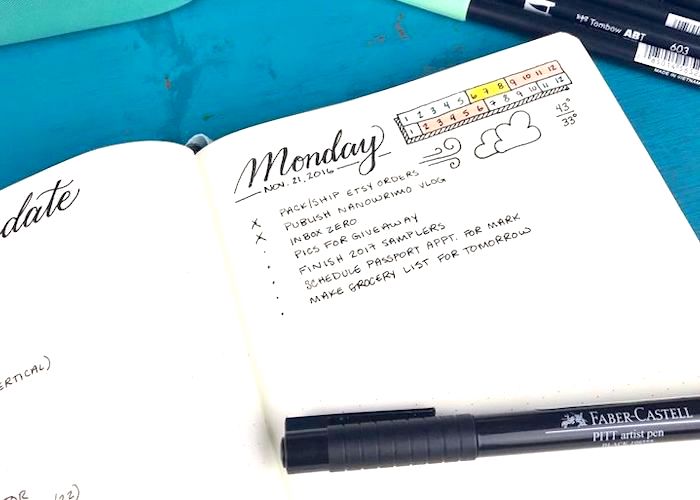
If you’d like to learn more about weekly and daily logs, I’ve written 5 weekly log ideas for your bullet journal and 5 daily log ideas for your bullet journal detailing what these logs are, five ways you can set them up, and how to choose a weekly or daily log to suit your planning needs.
Future and monthly logs should be added to your index. You don’t have to add your weekly or daily logs to your index if you don’t want to.
STEP SIX COLLECTIONS
The inclusion of collections in a bullet journal is what makes bullet journaling so different from other kinds of planning systems.
A collection is where you write down anything on any particular topic that is of interest to you.
Examples of collections include a goals collection, where you write down your goals for the year and how you’ll achieve them. Another is a packing collection, where you make a list of everything you need to pack for an upcoming trip.
Collections can include anything and everything. If you’d like some more collection examples I’ve written this post called 5 collection ideas for your bullet journal.
MAKE PLANNING A DAILY ACTIVITY
Every Sunday night I set up my weekly log for the following week. In this weekly log I write down anything from my future and monthly logs that need to be done that week into their relevant days. I then add any chores that I need to do from my chores collection, and then add anything else that I remember needs doing.
Every night before I go to bed I look over the current day and migrate anything that I didn’t accomplish to the next day, or another day where I have more time (migrate means moving something from one day to another).
Sometimes if I have a lot I need to do on a particular day, I’ll prioritise the top 3 things that need to get done, so if I don’t do everything on my list, I still feel productive.
When it comes to bullet journaling my advice is to just start. Don’t get confused by the bullet journal terms. That’s exactly what put me off when I first started. Just dive in, and change things as you go along. Very soon you’ll find what works best for you, and you’ll be a bullet journal advocate.
Do you have any questions regarding bullet journal set up?

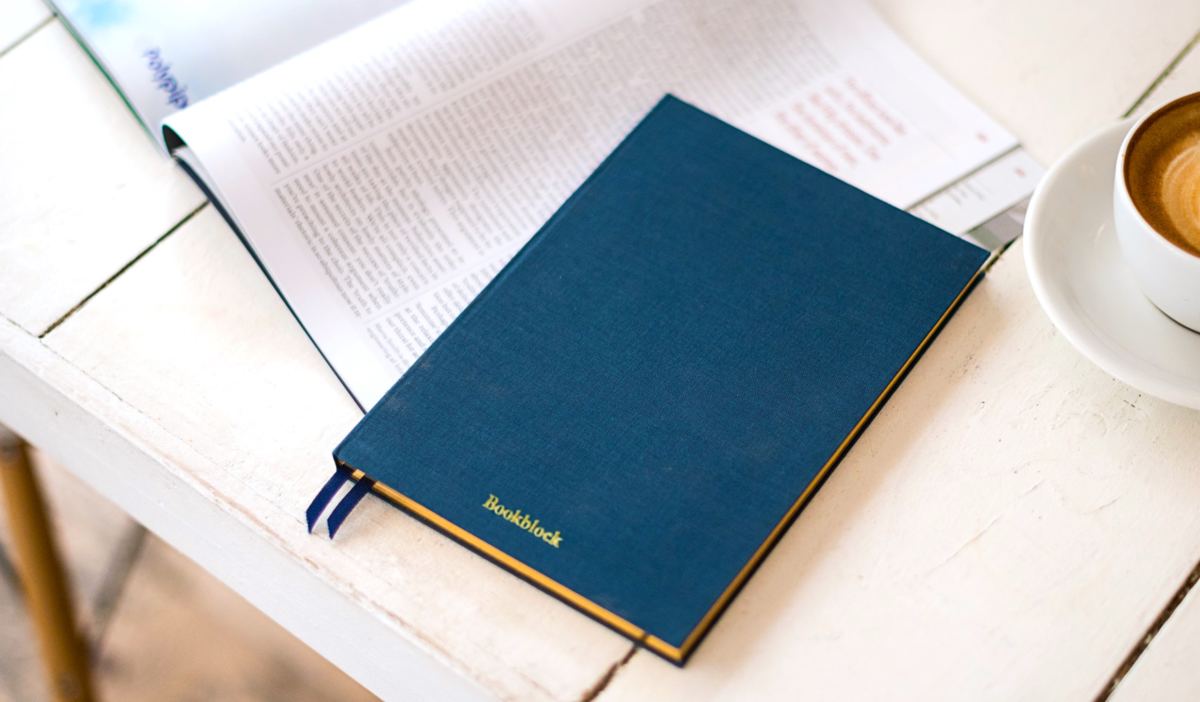


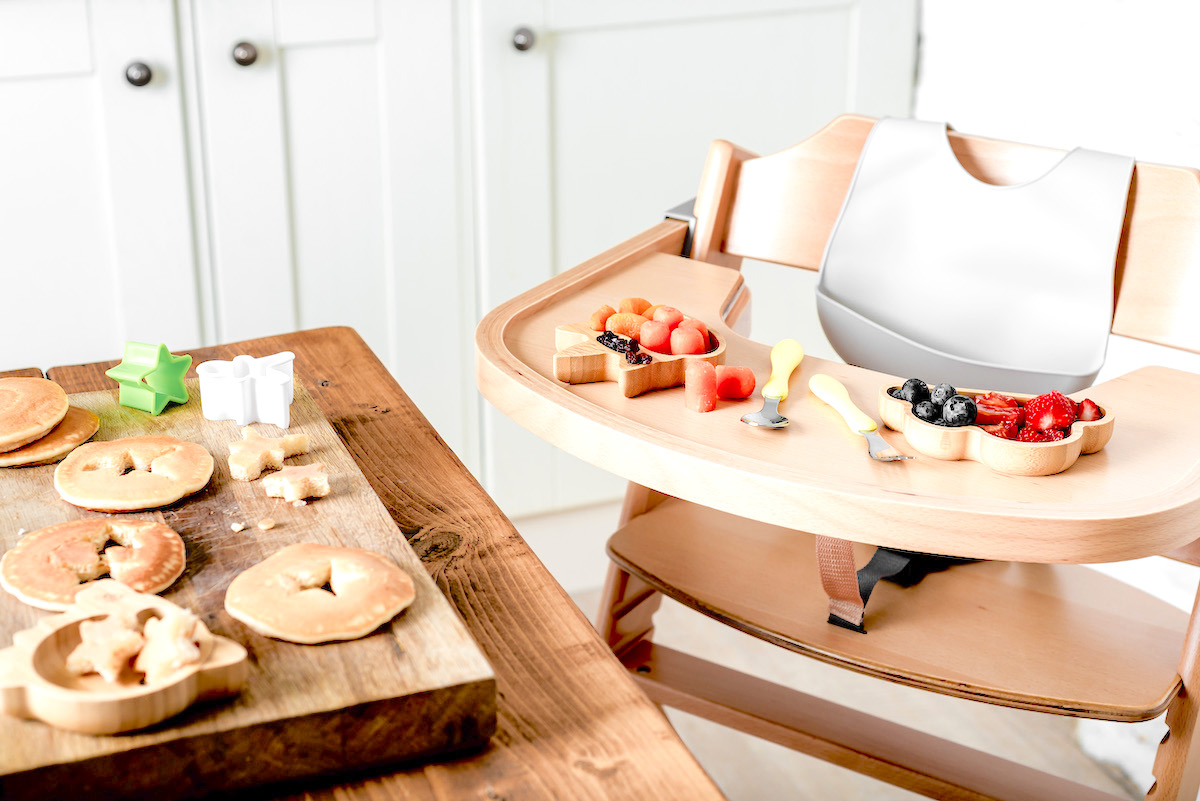

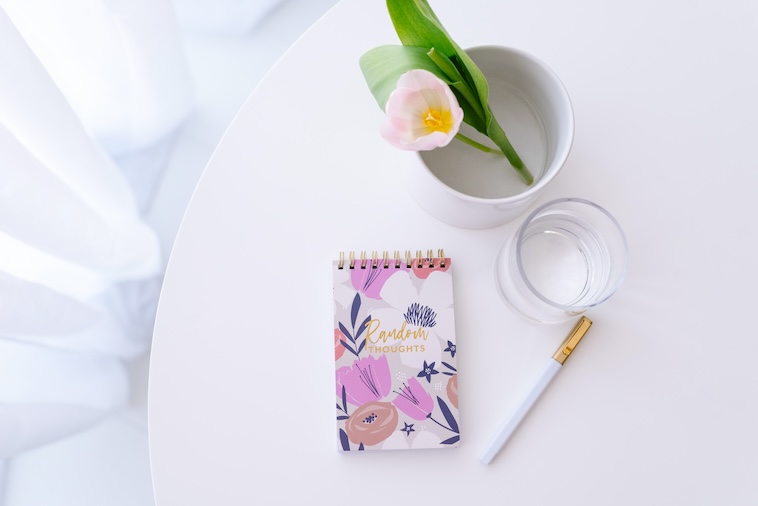
I have gotten into the habit of developing a bullet gratitude journal and I love it! x
Thanks Amanda, that’s a fantastic idea! I’ve seen a lot of gratitude list ideas and it’s something I’ve thought about for a long time as too often we don’t take the time to list what we’re grateful for. This is something I definitely want to look into further. Good luck with your journaling.
Thank you so much for this steps… I’ve been looking for one article that explains very well everything ’cause I want to start my bullet journal next year… And you helped me A LOT!!
You’re very welcome, I’m so happy I could help. Good luck with your bullet journal I’m sure you’ll be an expert user very soon.
Hi Lisa its Imogen. This would have been so useful when i first started bullet journaling and is useful now. This Really has helped me i am the person from the 5 weekly log ideas for your bullet journal. I love your posts because they are so easy to understand and follow . One question when can u start a bullet journal like a new year new month like when. I watch amandarachlee on youtube who is a bullet journal pro.
Hi Imogen, thank you so much for your kind words again, I’m glad my posts are helping you.
The absolute best thing about a bullet journal is that you can start it anytime you want, and I’ve found that the best thing to do is just start. You could start with a daily plan if you like, which means you could start tomorrow.
Or you could try starting to plan next week, and then take it from there. Plan out the rest of your weeks for May and then towards the end of May start planning out for the whole month of June, then each week or day in June.
I’ve also watched Amanda Rach Lee on YouTube, she’s so talented and so creative and I think she actually has her own journal out now too.
I can’t wait to hear how you go.
Hi Lisa I am going really well thanks to ur bril advice I wish I could show u a pic of my bullet journal but I don’t know if I can
I’m so happy that you’re going well, I’m sure your bullet journal looks amazing, and you’ll continue to develop it to your needs.